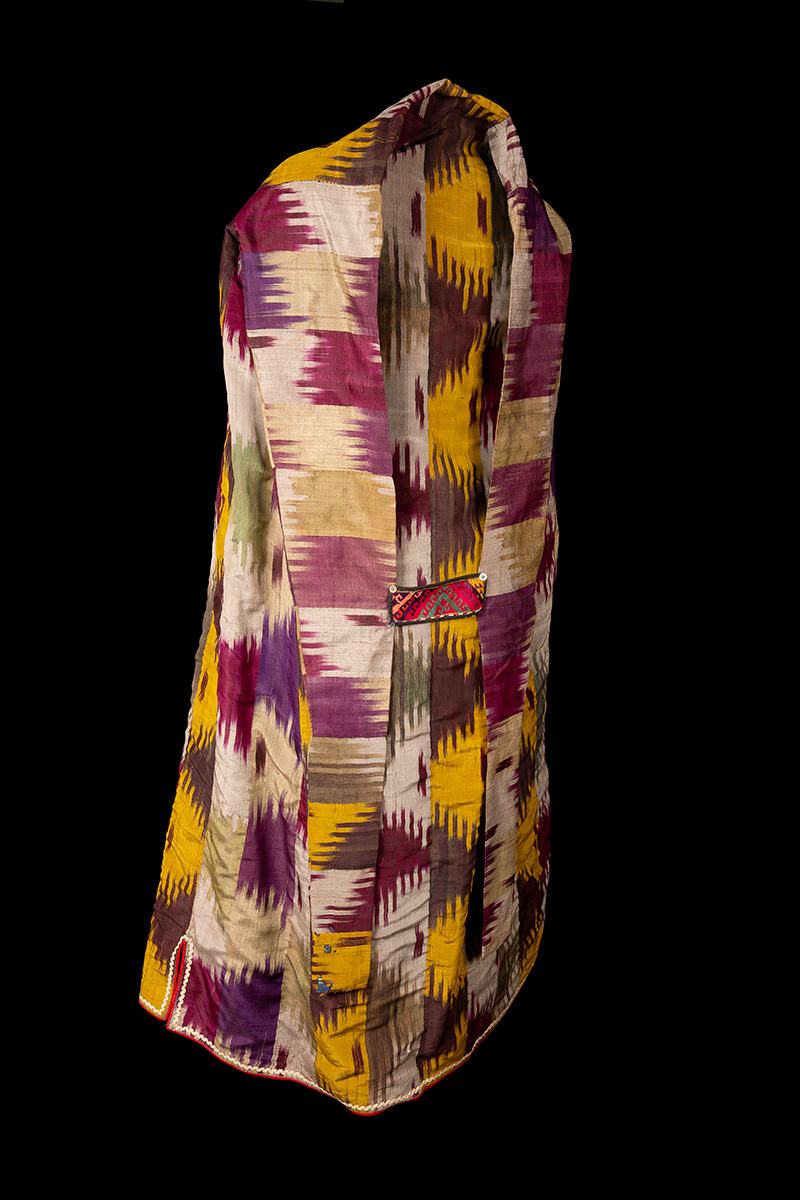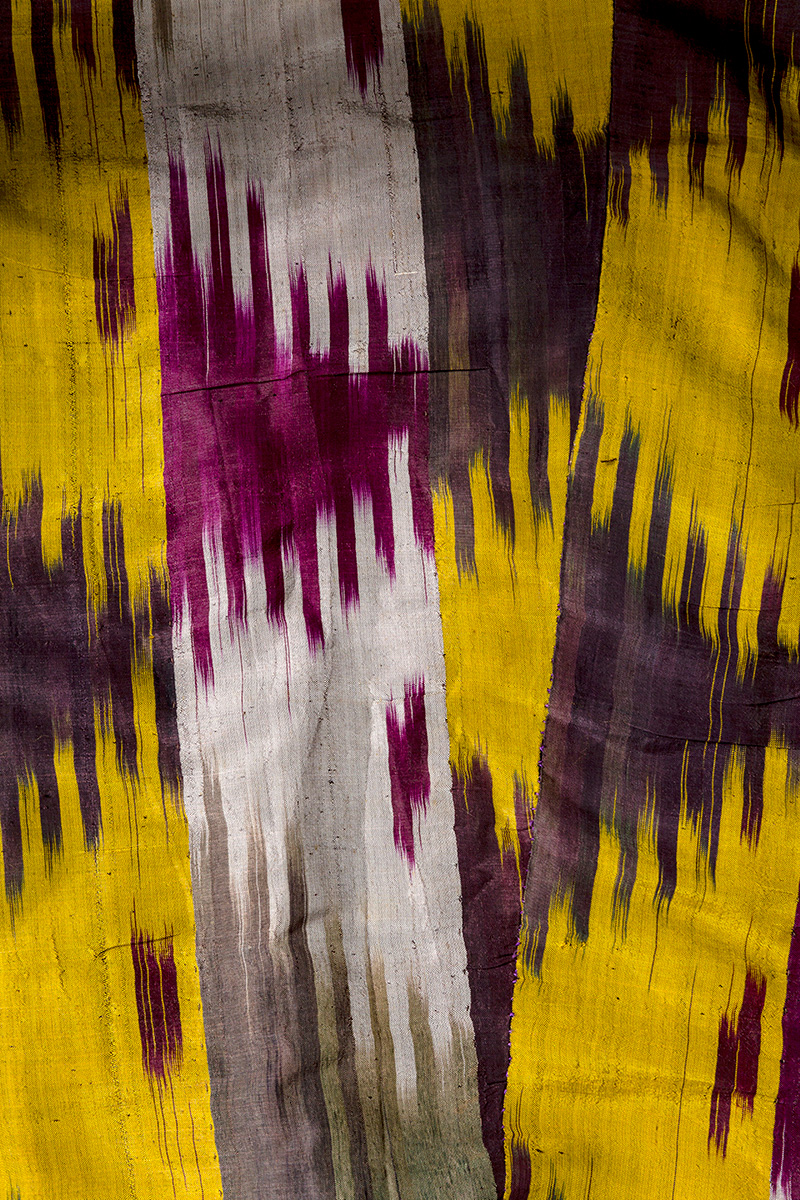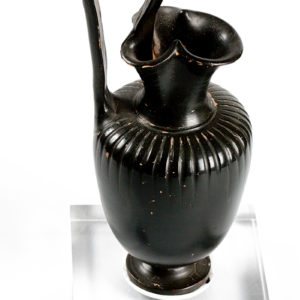Ikat Chyrpy – Central Asia
$1,500
Spectacular hand-loomed Chyrpy with a checkered pattern, finished with a remarkable white wavy cotton edging.
Product Description
Spectacular hand-loomed Chyrpy with a checkered pattern, finished with a remarkable white wavy cotton edging. Women in Uzbekistan and Northern Afghanistan wore this outdoor veiling garment (paranja/chrypy) in traditional colours of dark blue, green and grey – colours considered appropriately modest by local tradition. The beautiful rich colours are all natural and applied into the design with a master’s touch. They are worn over the tunic in cloak-fashion, covering the head and shoulders, with the long vestigial sleeves hanging down the back and joined by an embroidered band. It is in excellent condition. a masterpiece.
By the end of the 19th century, wealthy women began wearing silk ikat and striped fabrics (prior to this, only members of the court were allowed), and coats were produced in bright colours – yellow, light blue and even pink.
Ikat weaving has emerged from different parts of the world independently, however it is ikat from Uzbekistan, defined as abrabandi, meaning “bound cloud” which is the most captivating. The word ‘ikat’ comes from the Malaysian word ‘mengikat’ or ‘to tie’, because the loose threads are tied into bundles using grasses or wax-treated cotton to specify where the dye is able to sink in and color the thread. The threads are dyed before they are woven into the textiles.
A characteristic of ikat textiles is an apparent “blurriness” to the design. The blurriness is a result of the extreme difficulty the weaver has lining up the dyed yarns so that the pattern comes out perfectly in the finished cloth. The blurriness can be reduced by using finer yarns or by the skill of the craftsperson. Ikats with little blurriness, multiple colours and complicated patterns are more difficult to create and therefore often more expensive. However, the blurriness that is so characteristic of ikat is often prized by textile collectors.
The Silk Road was a network rather than a single highway, at the heart of which sat what we know today as Uzbekistan, where mountain and steppe meet desert. A succession of empires lost and won by nomadic invaders have left behind a unique melting pot of cultures. Merchants, pilgrims, and envoys were attracted here, not only by trade but also by exchanges in religion, technology and the arts. Where these people met, so too did their ideas and their creativity, one of the most original and visually dramatic examples of Central Asian silk. The clarity, saturation and depth of colour in classical ikats are their greatest artistic strengths. The eye is teased, tickled by the sophistication of the composition and the elegance of the forms.
Measurements: 142 cm H.


















